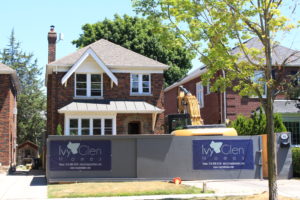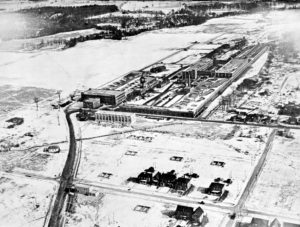September 3: It’s that time of year again: back to school time. Although many people I know were happy to get back to school, I was not. While I recall elementary school as being enjoyable, secondary school was an unhappy time in my life.
This might have been due to the fact that elementary school classes didn’t change much year over year. Everyone pretty much knew everyone else, and there were no surprises. There was a natural order after a while and everyone knew where they belonged. This suited my need for predictability and consistency and I was happy. This changed a bit in Grade 7 when we were joined by kids from two other schools, but there were only 3 rooms of Grade 7 students, so it was not a huge change. Besides, my demented and soon-to-be life-long friends Chris and Harvey came to the school at that time, so there was an off-setting benefit.
Everything changed with high school. I went from one of the oldest kids to one of the youngest, and smallest. Suddenly I was surrounded by 17 and 18 year olds whom I perceived as being “adults”. While there was the promise of growing maturity for me, raging hormones made it an uncertain process. The natural order of elementary school was replaced with new classes full of kids who I perceived as being smarter than I.
This was exacerbated by the strange decision to stream me into the music program. I had never expressed a desire to be there, nor had I ever played any sort of instrument. Yet there I was trying (at least initially) to learn the baritone trombone. As a kid who never wanted to be seen making a mistake, the daily music class was torture. The vast majority of the class was musical and had experience, so they went ahead at a great rate. I found practicing hard and the repetition of mistakes was dispiriting, so ultimately, I pretty much gave up. When the school concert was held at year-end, I was asked to sit quietly and not play.
 Things didn’t get much better in later years. Although I was on the swim team and had a bright red City Champions jacket to wear around, swimming didn’t have the social status of football or track, and I was that skinny little kid on the end of the second row not one of the stars. Academically I was middle of the field or worse, with the occasional effort to stick my hand up to answer a question often met with failure and further derision. I learned that it was better not to do that ….
Things didn’t get much better in later years. Although I was on the swim team and had a bright red City Champions jacket to wear around, swimming didn’t have the social status of football or track, and I was that skinny little kid on the end of the second row not one of the stars. Academically I was middle of the field or worse, with the occasional effort to stick my hand up to answer a question often met with failure and further derision. I learned that it was better not to do that ….
 And so it went until Grade 13, which my parents decided should be spent at the Canadian Junior College in Lausanne, Switzerland. Needless to say, this was a complete change and not one that I really wanted to make. I had a girlfriend and a gang of friends in Toronto, but thankfully, the decision was not mine to make. That year was a complete about-face. I was slightly better academically, which was surprising given all the potential distractions and cheap beer. Perhaps because of the cheap beer, I broke out of my little shell and took part in the school newspaper and yearbook. I was in a band and asking girls I barely knew to dance. I’ve written about that period elsewhere (see April 29, 2015) and it was truly a year that changed my life irrevocably for the better.
And so it went until Grade 13, which my parents decided should be spent at the Canadian Junior College in Lausanne, Switzerland. Needless to say, this was a complete change and not one that I really wanted to make. I had a girlfriend and a gang of friends in Toronto, but thankfully, the decision was not mine to make. That year was a complete about-face. I was slightly better academically, which was surprising given all the potential distractions and cheap beer. Perhaps because of the cheap beer, I broke out of my little shell and took part in the school newspaper and yearbook. I was in a band and asking girls I barely knew to dance. I’ve written about that period elsewhere (see April 29, 2015) and it was truly a year that changed my life irrevocably for the better.
As Labour Day approaches though, I think not of the excitement of leaving for Lausanne, but of the dread of going to North Toronto. I was so intimidated and unsure of myself that I undermined who I might have been. Had I found the freedom to let myself make mistakes and grow during those years, my life would have been far more fulfilling and enjoyable.




















![IMG_2188[1]](http://www.david-mckillop.com/wp-content/uploads/2016/05/IMG_21881-300x200.jpg)
![IMG_2181[1]](http://www.david-mckillop.com/wp-content/uploads/2016/05/IMG_21811-e1464277860376-200x300.jpg)